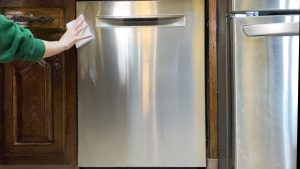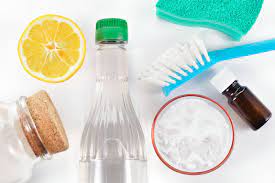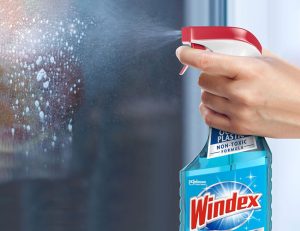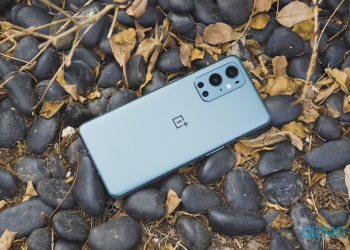Updated on April 4th, 2022
When you first purchase your brand new stainless steel fridge, dishwasher, microwave, or some kitchen appliance accessories like stand mixer oven,it has an untouched glow that lights up your kitchen instantly. But a few days down the line, the device loses its brilliance in rustling fingers, drinking water, and chaotic incidents. Fortunately, there are simple methods for making a new appearance of your stainless steel surfaces, regardless of how old the appliance is.
Stainless steel, unlike other surfaces, is remarkably easy to clean: simply wipe away any stains or smudges. Remove any oil residue or fingerprints with a little elbow grease. If you don't have any stainless steel cleaners on hand, you can use other household cleaners to give your appliances a fast shine. You'll need to invest in a few microfiber cloths to have your stainless steel appliances shining like new. These super-soft, non-abrasive cloths will last you a long time, particularly because they can be washed and reused.
So if you are wondering how to clean stainless steel, here’s all that you should know.
Before You Start
Check the manufacturer's instructions before you begin your quest for the ultimate cleaning solution. They're an excellent resource for learning how to properly clean stainless steel appliances. They'll usually recommend the best stainless steel cleaners and warn you about the ones that might damage the finish. In this case, you can rely on the manufacturer; they know how to clean a stainless steel refrigerator or oven, and following their directions will keep your appliances looking brand new.
What You Should Use?
- Water Does The Trick
A quick wipe with a microfiber cloth and water will clean stainless steel regularly and remove most water stains. Begin by dampening the cloth and wiping the appliance down. After that, dry the surface with another microfiber fabric. You will eliminate any excess moisture that may lead to potential water spots by giving the appliance a once-over with a dry cloth. Buff the steel with a polishing rag for added luster.
If your stainless steel surfaces are particularly grimy, you can also use a little dish soap. Choose a dish soap that is chlorine-free and apply a drop to a rag. Soak the cloth in water and wring out the excess. Wipe down the surface, then wipe it down again with a damp cloth (no dish soap), and finally dry it with a clean, dry rag.
Stainless steel, like wood, has a grain. Examine the grains on your appliance's surface and wipe in that direction, starting at the top and working your way down.
- Steaming Stainless Steel
You may also use a steam cleaner with a nozzle attachment to sterilize stainless steel. The steam will sterilize the surface, which can then be washed clean with a soft cloth. Because stainless steel is easily scratched, avoid using a brush attachment or other harsh cleaning tools.
For polishing, use a soft clean fabric and add a few drops of baby oil (you may also use other mineral oil), and rub it onto the surface or apparatus. This is how you can clean stainless steel easily and make it all shiny and new.
- Wonders With Vinegar
White vinegar is a strong and efficient cleaner for the home (and one that most of us have in our pantry all the time). Apply vinegar directly to the stainless steel surface of the appliance with a spray bottle and rub it clean with a smooth, clean cloth following the grain. Using a second rag, apply a small amount of olive oil to the surface and polish it.
Wet a thick, clean towel with distilled white vinegar that has been brought to a boil for tough spots on stainless steel appliances. (Handle the liquid with care to avoid scalding yourself.) Place a damp towel on the affected area and leave it there for 30 minutes. Scrub gently until the spot is gone, and then sprinkle with baking soda. Wipe the region dry with a clean cloth after wiping it clean with water.
- Glass Cleaners
A mild glass cleaner is a great choice for a fast clean and shine. Simply spray the stainless steel appliance and wipe it clean with a dry, clean cloth. Keep in mind that if the stainless surface may be in direct contact with food, this might not be the best choice.
- Tackling Fingerprints With Alcohol
Fingerprints on stainless steel are nearly impossible to avoid, particularly if you have small children who want to touch everything they see or aspiring chefs who don't care about the mess at hand. Fortunately, removing fingerprints from stainless steel appliances is easy. Simply blot the stains with a smooth cloth soaked in rubbing alcohol. The sticky residue and grime left by a human hand would be zapped by the alcohol.
What You Should Not Use?
- Steel wool or brushes scratch stainless steel surfaces, making them more vulnerable to rusting and staining.
- The surface will be scratched and the finish will be dulled if you use abrasive cleaners.
- Stainless steel can be stained and damaged by bleach and chlorine-based cleaners.
- Allowing dirty water and cleaning solution residues to dry on stainless steel would fade the finish and possibly leave lasting stains.
- Any tap water is abrasive and can leave stains or spots. Instead, use distilled or filtered water.
Now that you know how to clean stainless steel appliances, you don't have to dread fingerprints. With a little bit of simple routine cleaning and household ingredients and special care items for regular maintenance, you can ensure smooth cleaning.
Hope these methods helped you!
More to read:
Keep Your Toaster Clean and Shiny With These Easy Steps
Best Stand Mixers in the U.S. That Are Selling Like Hot Cakes 2021
We hope you love our reviews! For your information, we do earn money from commission in the link in the content! For more information click here!



















